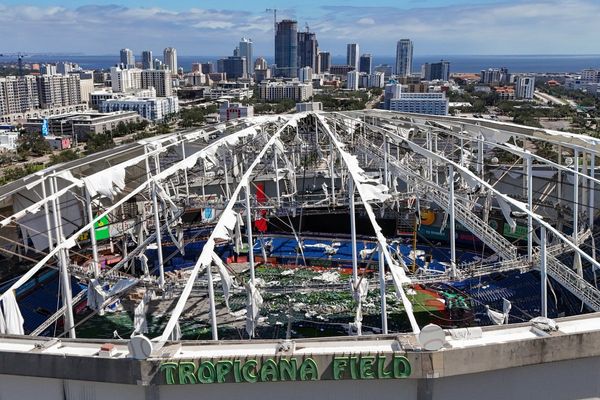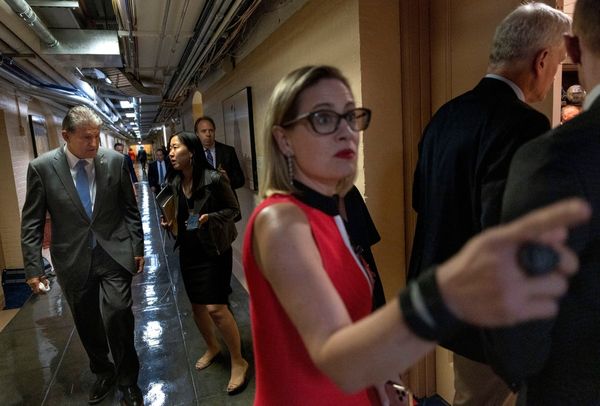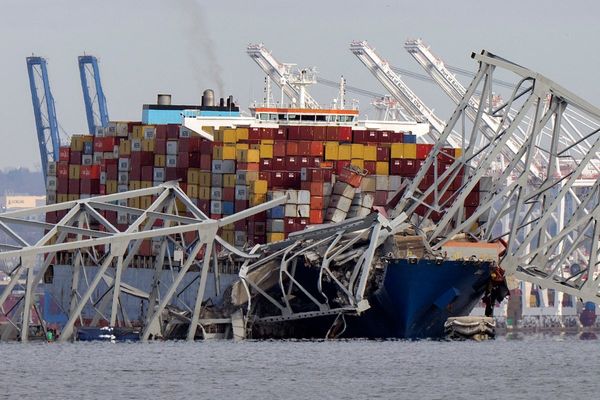
San Francisco may struggle with an intractable housing crisis, gaping income inequality and a deserted downtown – but one thing it will not tolerate is second-rate trash cans.
In 2018, the city’s department of public works began the process of replacing its more than 3,000 existing public trash cans. Not content with the models already on the market, San Francisco launched what is now a three-and-half-year (and counting), $550,000 project to design bespoke bins for its streets.
The design criteria for the trash cans stressed innovation (“Each can must be outfitted with an electronic sensor that sends alerts when nearing trash capacity so it can be emptied before overflowing”), aesthetics (“The design must be a visual asset on the sidewalk”), and above all, rummage-resistance.
The existing bins were “easy targets of scavengers, who rummage through them and leave behind a mess”, according to the public works department.
In July, the city finally rolled out custom-made prototypes of the three finalist designs. Production of the prototypes cost between $11,000 and $20,900.

But having already spent three and a half years on this rubbish issue, the city isn’t going to make any rash decisions on the final design: everyone’s invited to weigh in on which can is best. The three prototypes are distributed all over the city, with QR codes attached so that citizens can provide feedback during a 60-day pilot program. (Also planted across the city are three “off-the-shelf” models, which would reportedly cost $630 to $2,800 each; the custom ones, when produced at scale, are expected to cost $2,000 to $3,000.)
The Guardian took a tour around the city to investigate the options.
Salt and Pepper

This $11,000 trash can lives up to its name: it looks like a salt or pepper shaker. The public works department says its “unique and elegant profile stands out from afar”, and indeed, it was visible from across the street. But it doesn’t look particularly unique or elegant when stuffed with garbage: it looks like a trash can. And though its design may limit graffiti as intended, the steel fins seem likely to prove difficult to clean; they were encrusted with some unidentifiable gunk.
The Salt and Pepper has a separate section on top that’s intended for recyclables, as indicated by an unintelligible symbol. It was packed with non-recyclable items, which seems inevitable when hurried passersby are faced with a stuffed bin.
The opening for normal trash was small, which the city says makes it “difficult to rummage in the can”. It also makes it difficult to throw out a cup of coffee. A wide lip at the bottom of the opening means you really have to reach in there to ensure your trash lands in the bin, rather than next to it. Seeking a trash can people can’t take things out of, San Francisco has built one you can’t put things into.
Appearance: 5/10
Ease of use: 4/10
Overall: 4.5/10
Slim Silhouette

For $18,800, you get a trash can with a circular mouth that makes it appear permanently alarmed.
This bin’s appearance is unobjectionable; despite its name, it has an appealing heft to it. It would look at home on any street, but so do the current green trash cans. And like its slightly cheaper sibling, it’s a lot more appealing in the prototype images than it is when scuffed up and nearly overflowing. Also like its sibling, it was not drawing any interest from passersby despite the QR code on its side.
The Slim Silhouette also has separate compartments for garbage and recycling; again, both were filled with trash. The trash hole was even smaller than the Salt and Pepper’s, and when a finicky Guardian reporter threw out an item, he was forced to touch other trash making a bid for escape.
Appearance: 6/10
Ease of use: 3/10
Overall: 4.5/10
Soft Square

And finally, the bin behind the headlines: the $20,900 Soft Square, which is neither soft nor a square. The city describes this one as having a “recognizable trash can silhouette”, which does seem like something you want in a trash can. No one wants San Franciscans dropping their mail in these things or mistaking them for long-lost friends.
This is the only trash can that requires users to open it. There’s a pedal at the bottom so you don’t have to touch the handle; unfortunately, the pedal is so sleek and subtle that the Guardian reporter didn’t initially notice it and pulled the bin open by hand. Short on trash, the reporter placed a nearby leaf into the receptacle. Reopening it revealed that both the leaf and another piece of trash, placed earlier by someone else, remained stuck in the deposit slot, from which a fly lazily emerged.
As if to prove the slot was too small, a bag of trash sat on the ground next to the Soft Square, creating the very mess the cans are intended to eliminate.
Appearance: 5/10
Ease of use: 2/10
Overall: 3.5/10
The verdict
In a city obsessed with disruption, none of the models revolutionized the world of waste disposal. Might as well just go with the cheapest – or keep what we’ve got.







